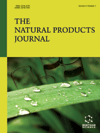
Full text loading...
Combining multiple natural extracts may provide an additive and/or synergistic effect, increasing the anti-cancer potential of the formulation while aiding in the search for targeted chemical compounds for cancer treatment.
Here, we confirmed the individual in vitro anti-proliferation effect of Apis mellifera syriaca bee venom (BV) and Jania rubens red algae polysaccharide extract (PE) on HCT-116 and HT-29 colon cancer cell lines and explored the synergistic effect of these two natural extracts, aiming to develop a new mixture with promising potential against colorectal cancer.
Given that the synergy between BV and algal PE was evaluated using concentrations of 5 and 250 μg/mL, respectively, a significant combined effect was noted, leading to at least a 20% more reduction in cell viability than with either extract alone. Additionally, the combination therapy significantly reduced cell migration more than either extract achieved on its own, exhibiting increased anti-migratory capability in a time-dependent manner.
This synergy indicates the potential of enhanced anti-cancer efficacy in formulations based on combinations of natural components.

Article metrics loading...

Full text loading...
References


Data & Media loading...

